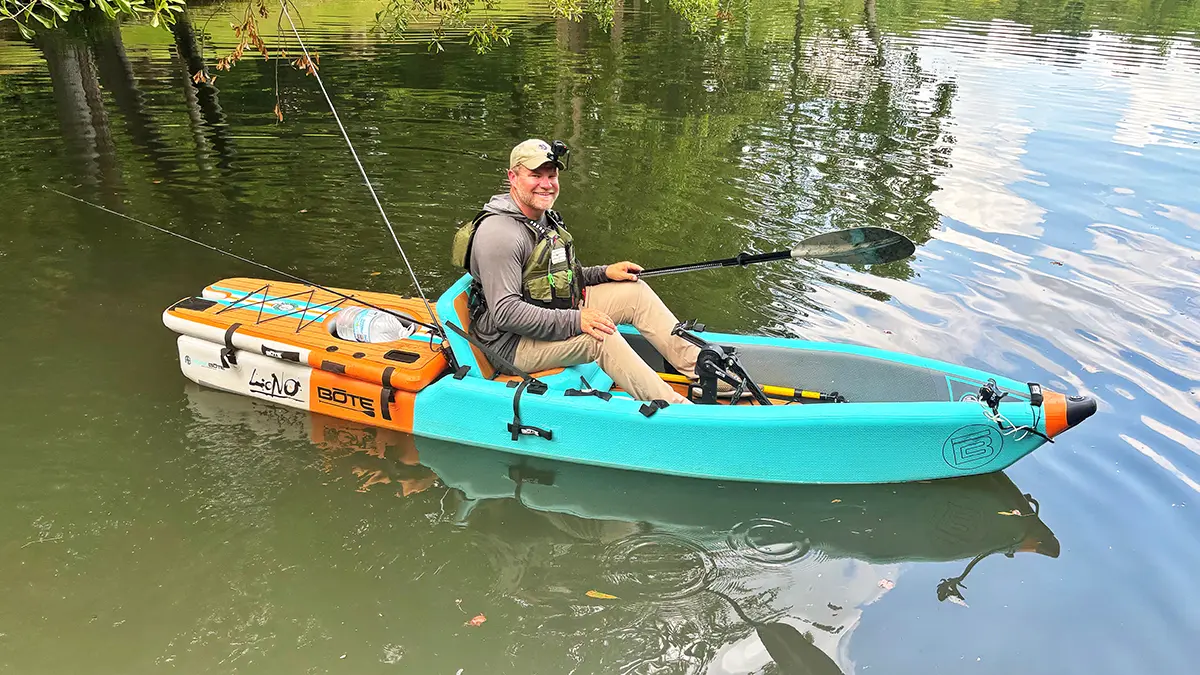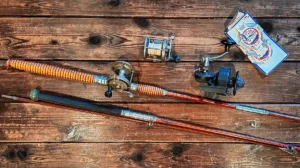Today we’ll be reviewing the BOTE LONO Aero Inflatable Kayak with the Apex Pedal Drive + Rudder System. I’ve had this kayak for a couple months, and I’ve been both impressed and surprised by the rigidity and stability of the boat, since it is an inflatable. The Apex Pedal Drive (Apex PD) is a feature that truly does put this boat into a league all its own when looking at packability combined with functionality. This has been a fun one to test. The BOTE Lono Aero has quickly became one of the best inflatable fishing kayaks.
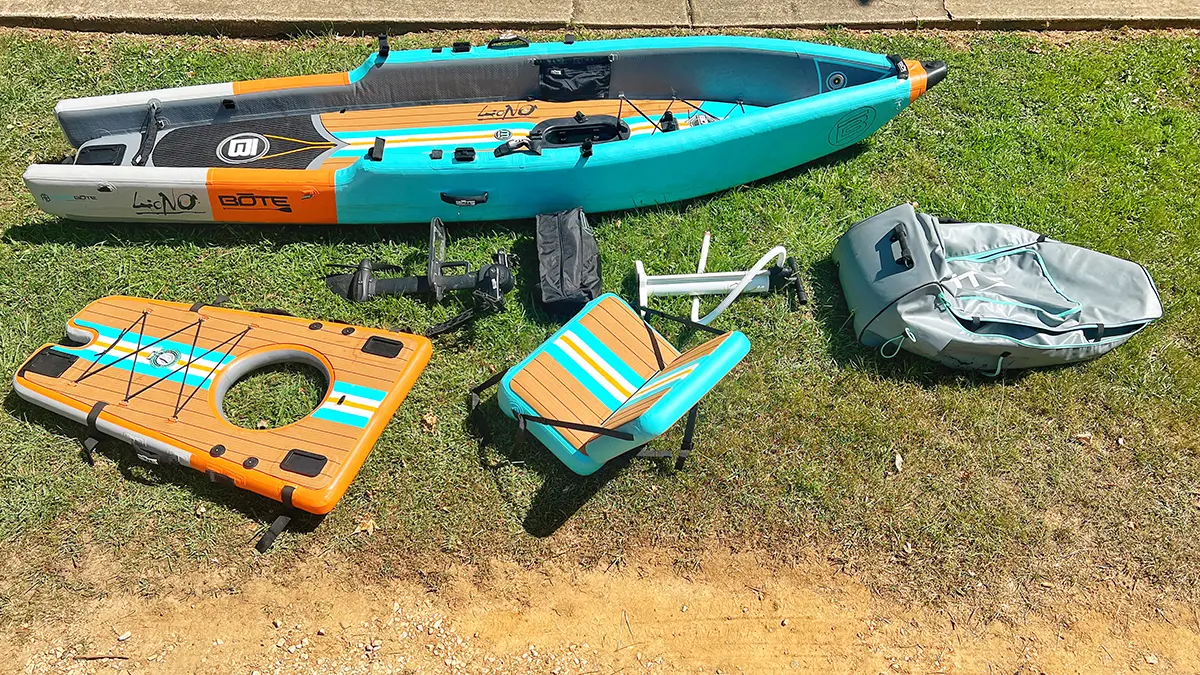
THE BŌTE LONO AERO SPECIFICATIONS
The Lono Aero measures 12 feet, 6 inches long and about 3 feet wide when fully inflated. It essentially comes in five pieces. You have the hull, the seat and the back deck—all three of these are inflatable and are packed together into a rolling travel bag. Then there’s the Apex PD, which is packed separately. Lastly, you have the hand pump that attaches to the side of the main bag using bungees.
SPECIFICATIONS
- Dimensions: 12′6″L × 35.5″W × 20″D
- Avg. Hull Weight: 51 LBS
- Capacity: 400 LBS
- Removable Top Dimensions: 53″L × 33″W × 3.5″D
- Avg. Removable Top Weight: 9 LBS
- Removable Seat Dimensions: 24″L × 22″W × 18″D
- Avg. Removable Seat Weight: 7 LBS
- Construction: Inflatable AeroBOTE Technology
- Optimal Hull Inflation: 10-15 PSI
- Optimal Removable Top Inflation: 10-15 PSI
- Optimal Removable Seat Inflation: 7-10 PSI
- Travel Bag Dimensions: 41″ L × 19″ W × 13″ D
- Loaded Bag Weight: 73 LBS (not including Apex Pedal Drive)
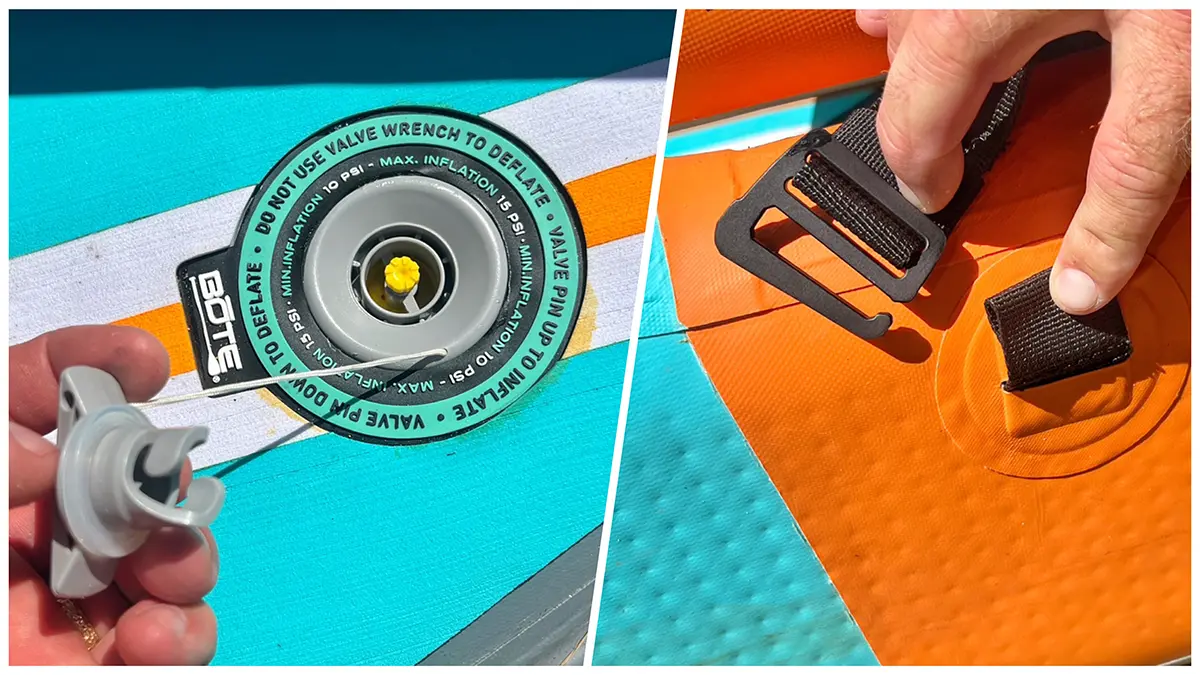
INFLATION AND ASSEMBLY
Remember, this is an inflatable kayak however, it is far more stable than I would have ever expected an inflatable boat could be. It comes with a manual hand pump that does a good job pumping the kayak up quickly. You also have the option of buying an electric pump from BOTE for $200. This might be a good idea if you plan to use the kayak regularly and break it all the way down each time.
The manual pump has a twist lock connection that connects securely to the air ports on the boat. There’s a separate port on each side of the hull as well as the bottom. The seat back and seat bottom have separate ports as well. Additionally the back deck has its own port.
One thing you’ll want to keep in mind, there are yellow spring loaded stoppers in each of the air ports on the boat. If you twist these and push them in, the boat deflates. You’ll need to twist them and let the spring push them out to plug the holes and keep the air inside while inflating. I failed to do this a couple times and had to re-inflate the kayak after the air shot out of the open valves.
The different pieces of the boat are connected using straps and G hooks that latch easily and securely to loops placed all over the boat. With the manual pump, it took me about 20 to 25 minutes to unpack the boat, pump up all three pieces and put it all together. The process was fairly smooth and intuitive.
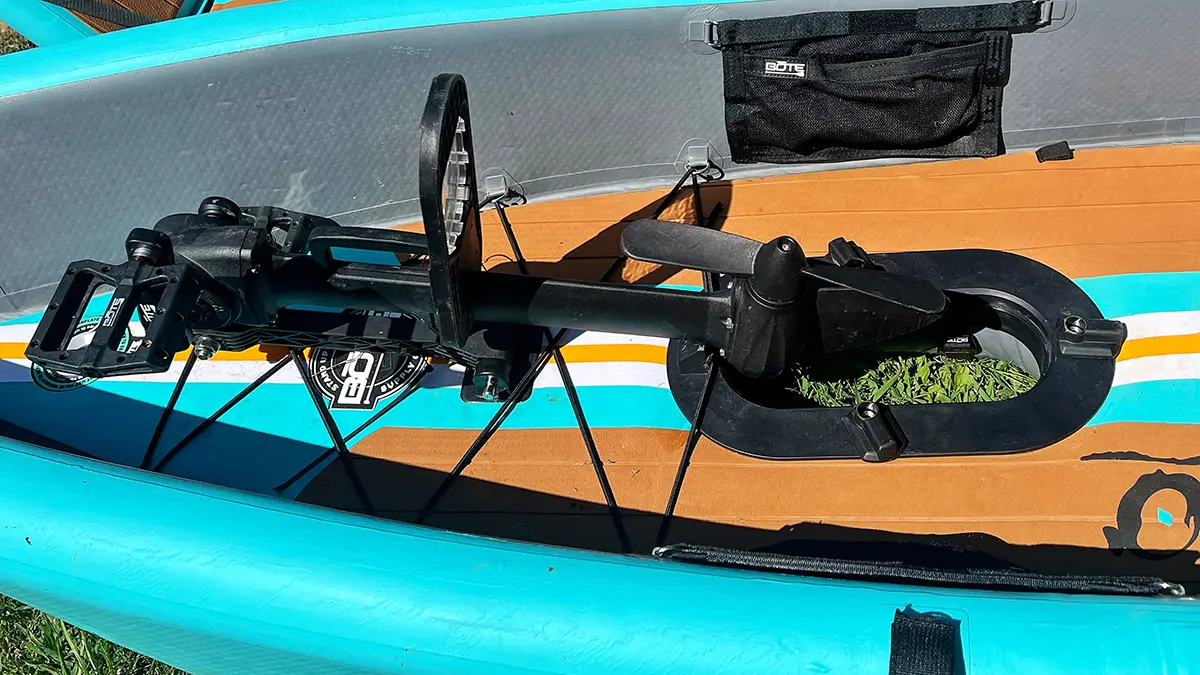
APEX PEDAL DRIVE
The Apex PD system comes with a Pedal Port that attaches using small straps and G hooks. The port fits down into a hole in the floor. It’s easier to connect the Pedal Port straps prior to fully inflating the floor. Once the port is in place, you can install the Apex PD itself.
This is a super easy process. You only have one pin that connects the Apex PD to the kayak, then you can insert the foot down into the Pedal Port. Secure the Apex PD by rocking the front tip of the drive under the notch in the port and then twist all the latches to secure it once it’s flush.
There’s a clear window that can be used to check for vegetation or other debris around the prop. You can also use the window to ensure the prop is vertical, so that the Apex PD can be lifted up and out of the Pedal Port. To do this, simply twist the three latches and then rock the Apex PD up out of the hole and store it in the front of the boat.
In addition, there is a rudder system that comes with the Apex PD that can be attached to a plate on the back of the boat using four small screws. Route the cable along the side of the boat using velcro straps and then mount the hand control for the rudder on either the left or right of the boat at the seat.
If you want to take the Apex PD out of the boat and leave it at home, there’s a clear plate that can be used to cover the hole in the Pedal Port so that nothing falls through. There’s also a catch-all net that bridges the back of the hull, ensuring none of your belongings roll out the back.
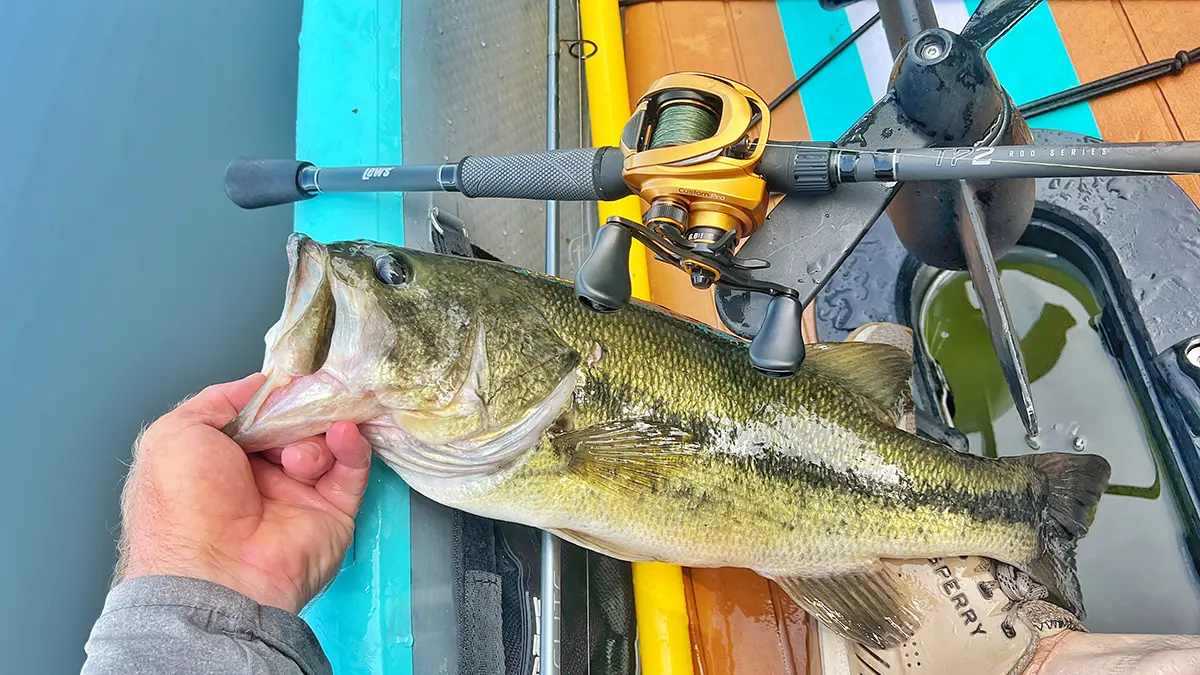
PERSONAL EXPERIENCE WITH THE LONO AERO
I was very impressed with several aspects of this boat while testing it. The Apex PD is strong. It allowed me to cover a lot more water than I could have with only a paddle. I could also move much faster with the Apex PD than I could with my paddle. I was able to overcome a pretty strong head wind with the Apex PD on my second trip in the boat—one that nearly stalled me out when I tried using my paddle alone.
I can also stand in this kayak, which again blew my mind. I’ve never used a SUP (stand up paddle) board before. BOTE is known for these. Honestly, it shouldn’t have been that big of a surprise to me but I currently clock in around 245 pounds and don’t have the surest of footing. For me, popping up in this thing was pretty impressive.
I stayed seated most of the time though. I was equally impressed with the quality of the inflatable seat. I fished in this boat for about 4 hours on my second trip. My back started to hurt a little about 2 hours in, I repositioned and adjusted the back using the straps which allowed me to finish the trip without even thinking about my back again.
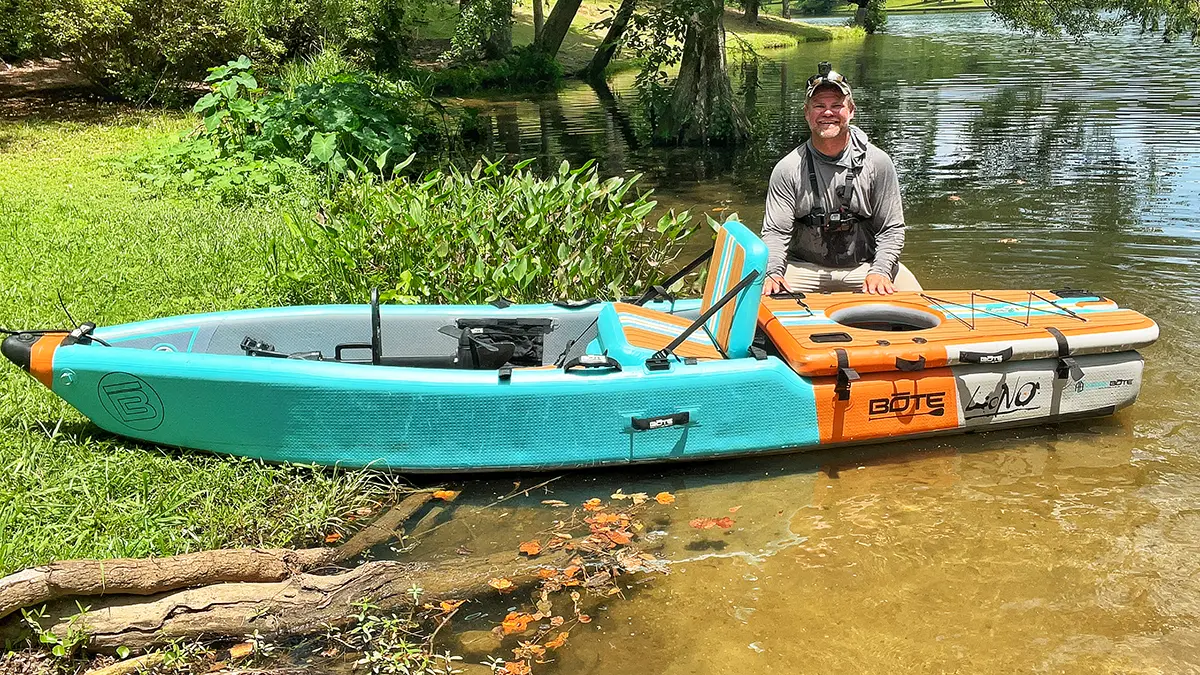
WHAT I FOUND CHALLENGING ABOUT THIS BOAT
While the Apex PD is stout, I did find it a little challenging to operate. I believe this has more to do with me being 37 years old and a little-more-than-slightly overweight. I don’t really like riding bikes either. If you take all of this into consideration you’ll understand why I had a little bit of a hard time with pedaling.
I think this system is as good as any other pedal drive and I was very thankful for it when trying to overcome that headwind and make the mile-and-a-half trek back to the ramp at the end of my second day of fishing from this boat. However, I found myself paddling as much or more than I did pedaling when just fishing down the bank. Which is fine. Having the pedal drive when I needed it was clutch.
Though it wasn’t challenging at all, pumping up the boat and assembling it did take some time. The breakdown and repack of the kayak took time as well. When deflating and repacking the kayak, be sure to use the deflate feature on the manual to suck all the air out of the kayak. This helps tremendously when repacking.
The basic boat doesn’t come with rod holder either, which creates challenges for avid bass anglers. I was able to take a couple rods and a little tackle in the boat each time. However, the limited rod and tackle storage would definitely need to be taken into consideration. BOTE does offer a Rocket Rac with some of its packages, or it can be bought separately. The Rocket Rac holds four rods and mounts onto the back deck of the boat.
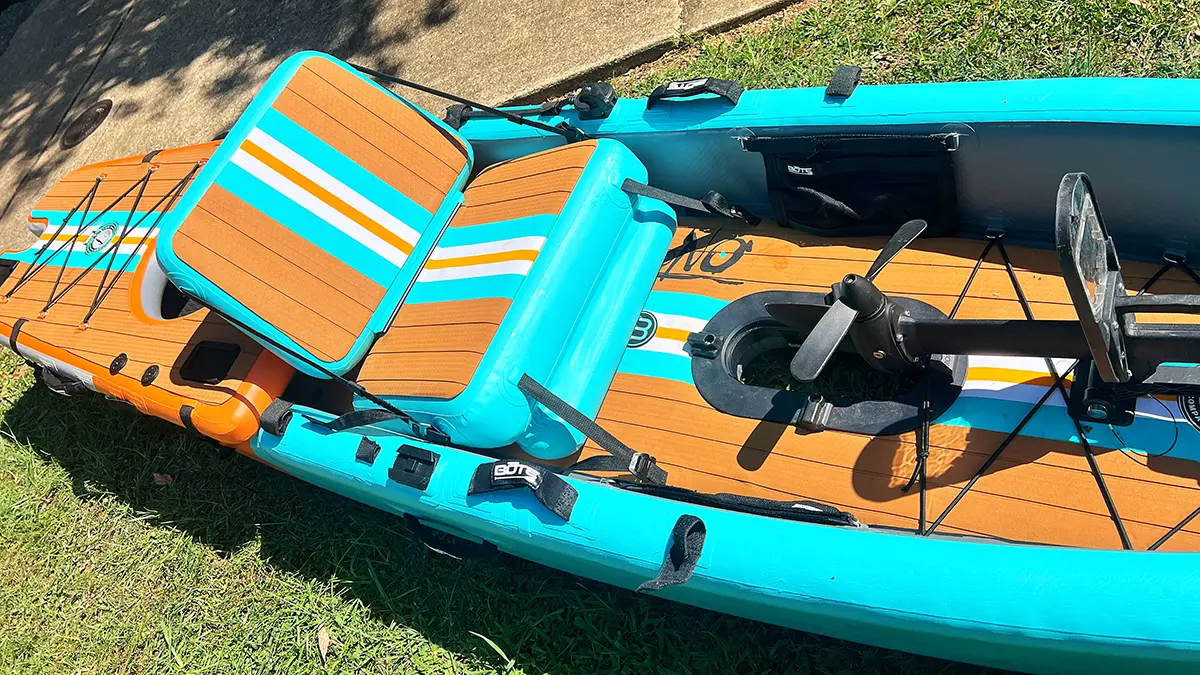
WHO IS THIS BOAT GOOD FOR?
If you’re an avid tournament angler that has a truck, the BOTE LONO Aero is going to be a hard sale. The limited storage is the biggest deterrent for that demographic. However, if you have a car or small SUV and you like spending time on the water, this is a great option. I had a ’99 Buick Century for about a year and a half a couple years ago while I was paying off some debt, I would have loved to have had this kayak back then. Having the ability to transport a kayak of this caliber in the back seat or trunk of a car is truly a game changer—especially with the Apex Pedal Drive.
This is also a really modular boat. You can take the back deck off if you want and make the boat lighter. Leave the Apex Pedal Drive at home and you’re essentially left with a SUP board with a seat. Paddle out to a beach and then pop the seat out and set it on the sand to chill a while. Then hook it back in and be on your way.
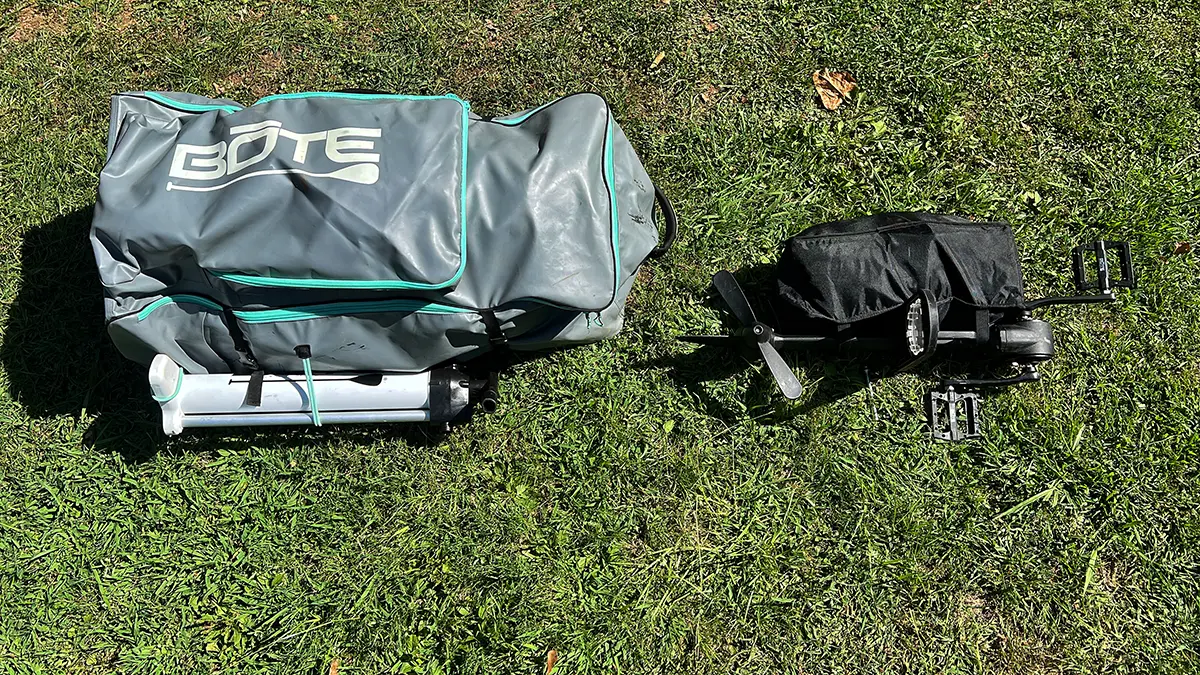
THINGS WORTH NOTING
The BOTE Aero LONO 12’ 6” Inflatable Kayak with the Apex Pedal Drive system has a plate on the rear of the deck that is compatible with a Power-Pole Micro shallow water anchor. There’s a circular hole in the back deck that fits BOTE’s Kūla 5 Magnepod cooler and offers additional storage beneath the deck.
There are mesh Stash Pockets that velcro to the inside of the hull in front of the seat on each side for storage, as well as the Magnepod on the floor in front of the seat—a magnetic attachment to hold your favorite metal cup in place. There’s a threaded accessory mounting point on the nose of the boat. Lastly, there are bungees and handles scattered all about the boat as well.
The BOTE Aero LONO 12’ 6” Inflatable Kayak with the Apex Pedal Drive system is impressive, no doubt. For the right water enthusiast, this is a fantastic boat. The kayak (without the Apex Pedal Drive) is available for $1,549.00. BOTE also offers a $2,857 package including the Apex PD, Rocket Rac rod holder and 5-piece adjustable paddle, currently on sale for $2,327.10.


